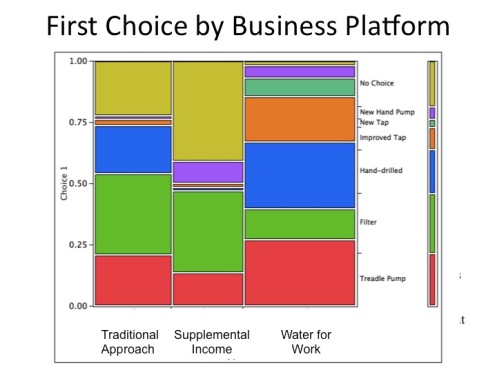2011 Fieldwork Overview
9 months of fieldwork conducted in 2011 reinforces the underlying assumptions of my research. During that time, I established several pilot business models for comparison.
First, I identified 6 technically feasible water improvements for residents of the area:
1) BioSand Water Filter
2) New Borehole with a Hand Pump
3) New Borehole with a Tap
4) Exchanging an existing Hand Pump with a Tap
5) Hand-drilled Borehole with a locally made Hand Pump
6) A Treadle Pump
These are described in more detail in other pages of this blog. Each participating household was presented with this list, with a detailed description of each option, including price. They were then asked to rank their choices (if they had more than one) for which they would be willing to pay (or work).
Then, I identified 9 villages that would be offered one of 3 different business models.
1) Traditional approach – Participants were offered these options at cost as montly CASH payments to be amortized over 2 years.
2) Supplemental Income – Participants were offered supplemental employment at a community garden in exchange for payment. They were then presented with the same Traditional Model above for financing water improvements.
3) Water for Work – Participants were given the choice between paying in CASH or paying for their choice through labor in the dry season. This was arranged in practice at several community gardens.
Results
Water for Work respondents were willing to pay for a deeper choice profile (mean 2.24 choices) than those offered Supplemental Income (mean 0.77) and the Traditional Approach (mean 1.24) respondents, with 98% choosing at least one option, compared to 58% and 77%, respectively.
In addition, the financing approaches seem to affect the priority of respondents, as the above figure demonstrates that the Water for Work program elicits the highest variety of 1st Choices.


